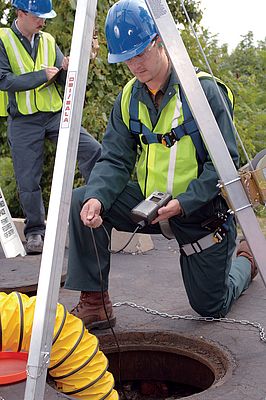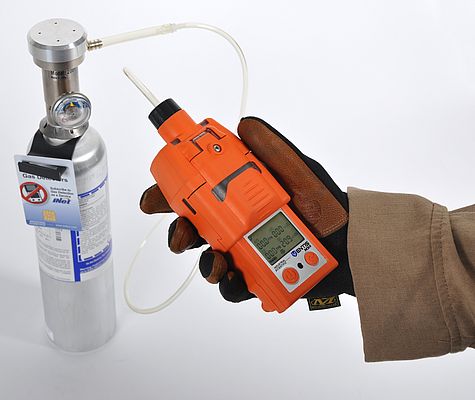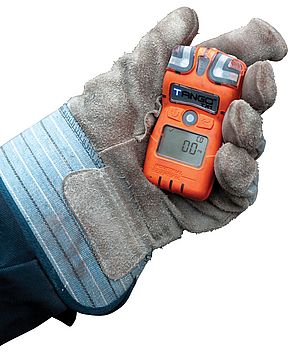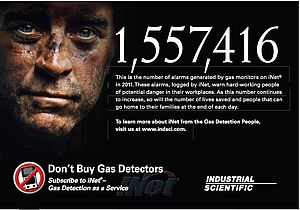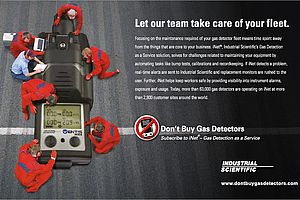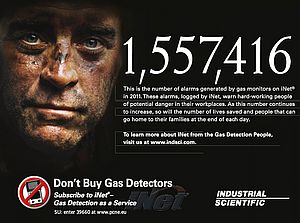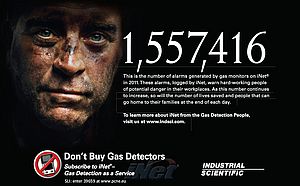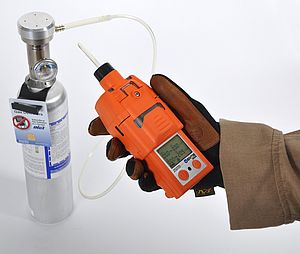Often a great deal of time and money are dedicated to selecting and purchasing a gas detector, with little thought about the calibration equipment that is designed to keep the instrument operating as intended.
It is a bright Monday morning and you have just arrived at your office to start the week. On your desk, there is a package marked to your attention, the company’s industrial hygienist, which has been placed there during the weekend. Judging by its size, you know that it could only be one thing. You think to yourself, “It’s here!” The brand new multi-gas instrument has finally arrived. You open the box to find the shiny new instrument within. You pick up the instrument and quickly realize that this is not like your son’s game system that simply hooks up to the television, requiring no review of the instruction manual.
You decide it would be best to know as much about this product as possible. After all, it is a lifesaving piece of equipment. As you read through the manual and caution statements, questions start to pop up in your mind. Calibrate monthly? Bump test before each day’s use? You think to yourself, “How do I do all of this?” As you continue reading, you find that some extra equipment, such as calibration gas cylinders and other related equipment, may be needed. You realize that these things that you have not purchased may be as important as the instrument itself.
Scenarios similar to this one happen every day in safety departments within almost every industry. Often, a great deal of time and money are dedicated to selecting and purchasing a gas detector with little to no thought about the calibration equipment that is designed to keep the instrument operating as the manufacturer has intended. Regardless of the instrument manufacturer, following the calibration and bump test recommendations is imperative to ensuring that the unit continues to be a life-preserving piece of equipment. So, how do you know what type of calibration cylinders and equipment you will need to buy?
Should I buy my calibration gas from the instrument manufacturer or from a local supplier?
Before you purchase calibration gas, you must decide whether you are going to purchase the instrument manufacturer’s calibration gas private label or purchase it from an outside local supplier of calibration gas. In order to make this decision, there are a few things you should consider. Some instruments require a specific calibration gas concentration and therefore may only be available through the instrument manufacturer. Although the local supplier may be cheaper than the quoted manufacture’s price, it may also lack the quality necessary to achieve a good calibration.
One way to verify the quality of the calibration gas from a local supplier is to ask if the gas cylinder is NIST (National Institute of Standards and Technology) traceable. In short, NIST traceability provides confidence that the proper cylinder concentration analysis was performed and that a Certificate of Analysis is available. Typically the manufacturer’s private label will be NIST traceable but it never hurts to verify this. Do not overlook the importance of NIST traceability. After all, the calibration cylinder is the cornerstone of your calibration. If you start with a flawed calibration gas source, you are going to get a flawed calibration.
Single-gas cylinder or cylinder blend?
The next decision on cylinder selection is whether to use a single-gas cylinder or cylinders that have multiple gases blended within. Naturally, single-gas instruments are best served by using a single-gas cylinder, while blended cylinders provide greater convenience to multi-gas instrument users.
One of the most common calibration gas blends is known as the four-gas mix. This mix of carbon monoxide, hydrogen sulfide, oxygen and combustible gas, provides the user of a standard four-gas instrument in this same sensor arrangement, an easier, quicker and cheaper way of calibrating and bump testing their instrument. The technology of calibration gas cylinder blending has allowed for almost any four- or five-gas instrument sensor configuration to be calibrated from just one cylinder. In cases where a blended cylinder is not available in that instrument’s sensor configuration, individual single-gas cylinders must be used.
Size calibration gas cylinder
Calibration gas cylinders come in all different sizes ranging from a 17 liter cylinder all the way up to 4,000 liters. Because these cylinders have a shelf life of six months to three years, you have to carefully gauge the amount of calibration gas you will use in a given time period. The amount of calibration gas you will use is based on three factors: number of calibrations and bump tests, amount of time to complete the calibration or bump test and, finally, flow rate. Although this can vary from one manufacturer to the next, roughly estimated you need just more than a litre of 4-gas mix per calibration. Performing frequent bump tests, as recommended, will reduce the amount of calibrations that a cylinder can provide.
Which regulator type to choose?
Once you have selected your cylinder(s), the appropriate regulator must be selected. Selection of the regulator is based on cylinder type, instrument being diffusion or aspirated and whether or not a calibration station is being used.
The simplest of the regulators is the constant flow regulator. This regulator will deliver a constant flow at a specified rate continuously until the cylinder is either empty or the valve is shut. This type of regulator is useful for calibrating and bump testing diffusion type instruments.
The demand flow regulator, although more expensive than the constant flow regulator, is designed to provide the calibration gas automatically to the instrument via a mechanical pump pulling the gas through the regulator. This type of regulator is optimal when calibrating or bump testing instruments with internal sample draw pumps. The reason is because it only allows gas to be delivered when the pump pulls the gas and the flow rate will be matched by the pump. If using a calibration station, the demand flow regulator is often your best choice. The calibration station will pull the gas automatically through the demand flow regulator upon demand, eliminating the need for the user to turn a valve on and off during the calibration or bump test cycle.
Selecting the calibration gas and associated regulator does not have to be as daunting of a task as you thought if you follow these simple steps:
1. Select the calibration gas cylinder manufacturer.
2. Decide if you are going to use single-gas cylinders or the more popular multi-gas blends.
3. Select the cylinder size based on annual usage.
4. Choose the appropriate regulator.
With an instrument manufacturer’s bump test and calibration procedures fully understood, and having the correct calibration gas and regulator on hand, your life-persevering piece of equipment will continuously work in the way the gas detection manufacture had intended which is to help keep your people safe.


